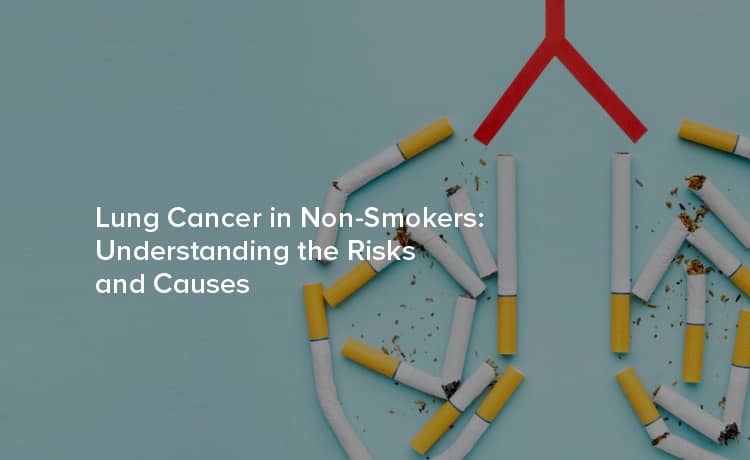
Lung Cancer in Non-Smokers: Understanding the Risks and Causes
1. Introduction
Traditionally, lung cancer and smoking have been closely linked in both research and public awareness campaigns. But as we uncover more about this disease, it becomes clear that smoking is not the only culprit. So, what does this mean for non-smokers, and how does lung cancer affect this population? Let's dive in.
2. Definition and Prevalence of Lung Cancer in Non-Smokers
Non-smoker lung cancer is defined as lung cancer that occurs in individuals who have smoked fewer than 100 cigarettes in their lifetime. Surprisingly, if lung cancer in non-smokers were a separate category, it would rank among the top 10 fatal cancers globally. Research suggests that between 10% to 15% of lung cancer cases occur in non-smokers.
3. Risk Factors for Lung Cancer in Non-Smokers
Environmental, occupational, and genetic factors can all contribute to the risk of developing lung cancer without a history of smoking.
- Environmental Factors: Air pollution, particularly from traffic and industry, contributes to lung cancer incidence. Equally hazardous is radon gas, a naturally occurring radioactive gas that can accumulate in homes and buildings, which is the second leading cause of lung cancer after smoking.
- Occupational Hazards: Exposure to carcinogens like asbestos, arsenic, diesel exhaust, and certain chemicals in the workplace significantly increases the risk of lung cancer.
- Genetic Predisposition: A family history of lung cancer may suggest a genetic inclination towards the disease, even in the absence of smoking.
- Secondhand Smoke Exposure: Regular exposure to secondhand smoke, also called passive smoking, raises lung cancer risk in non-smokers, confirming that the harmful effects of tobacco smoke are not confined to smokers alone.
4. Symptoms and Diagnosis
Identifying lung cancer early can be challenging, as symptoms often mirror less serious conditions. Persistent coughs, chest pain, breathing difficulties, and unexplained weight loss are among the symptoms to watch out for. For diagnosis, imaging tests like chest X-rays and CT scans are commonly used, along with tissue biopsy, when there's a suspicion of cancer.
5. Treatment Options
The primary treatments for lung cancer are similar for smokers and non-smokers and may include:
- Surgery: Removing a portion or all the affected lung.
- Radiation therapy: Targeting cancer cells with high-energy rays.
- Chemotherapy: Using drugs to kill cancer cells or stop them from growing.
- Targeted therapy: Focusing on specific mutations found in cancer cells.
- Immunotherapy: Boosting the immune system to fight cancer.
6. Prevention and Lifestyle Changes
Reducing the risk includes:
- Avoid exposure to radon and secondhand smoke.
- Advocating for and supporting policies to reduce air pollution.
- Ensuring workplaces are free from carcinogenic substances.
- Regular health check-ups may facilitate early detection.
7. Conclusion
Lung cancer in non-smokers is an increasingly important health consideration and serves as a reminder of the diverse causes of this disease beyond tobacco use. Understanding its risk factors and promoting prevention, early detection, and treatment offers the best opportunity for combating lung cancer in this population.
Everyone, especially non-smokers, must understand the risks, advocate for cleaner environments, and obtain regular health screenings. Let's educate ourselves and our communities and commit to a healthier, smoke-free world.

Author Bio
Dr A Praveen
Medical Oncology
medical oncologists in American Oncology Institute in Gurugram
Dr (Brig) Anil Kumar Dhar is one of the top medical oncologists in Gurugram. He has a vast experience of more than 30 years in the field of Medical oncology. He his specialised in treating leukemia,lymphoma, hematological oncology and other complex oncology cases . He is also specialised in Bone Marrow Transplantation (BMT) treatment. He is working as a Senior Consultant, HOD, Medical Oncologist in American Oncology Institute, Gurugram.
